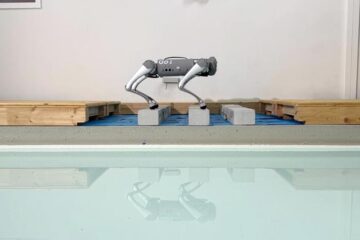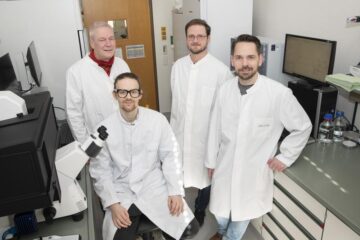Omega-3 fatty acids may help to reduce the physical harm caused by smoking

Omega-3 fatty acids may help to reduce the physical harm caused by smoking, according to a new study presented today at the World Congress of Cardiology.
The study, carried out in Greece, assessed the effect of four-week oral treatment with 2 g/day of omega-3 fatty acids on the arterial wall properties of cigarette smokers. The results showed that short-term treatment with omega-3 fatty acids improves arterial stiffness and moderates the acute smoking-induced impairment of vascular elastic properties in smokers.
“These findings suggest that omega-3 fatty acids inhibit the detrimental effects of smoking on arterial function, which is an independent prognostic marker of cardiovascular risk,” said Dr. Gerasimos Siasos, University of Athens Medical School, 1st Department of Cardiology, “Hippokration” Hospital. “The cardioprotective effects of omega-3 fatty acids appear to be due to a synergism between multiple, intricate mechanisms involving anti-inflammatory and anti-atherosclerotic effects. Furthermore, AHA recommends that people without documented history of coronary heart disease should consume a variety of fish (preferably oily – rich in omega-3 fatty acids) at least twice per week.”
“The World Heart Federation strongly encourages all smokers to quit,” said Dr Kathryn Taubert, Chief Science Officer at the World Heart Federation. “The only way to protect your body from the harmful effects of tobacco is to stop smoking. We encourage all people, both smokers and non-smokers, to eat healthy diets, which includes foods rich in omega-3 fatty acids.”
About the World Congress of Cardiology
The World Congress of Cardiology Scientific Sessions (WCC) is the official congress of the World Heart Federation and is held every two years. Through the Congress the World Heart Federation offers an international stage for the latest developments in science and public outreach in the field of cardiovascular health. The WCC places emphasis on the complementary nature of science and public outreach and strives to spread the message that through individual, community and patient-care interventions, the growing epidemic of cardiovascular diseases can be prevented. For more information, please visit: www.worldcardiocongress.org; keep up with the conversation on Twitter using the hashtag #WCC2012Dubai
About the World Heart Federation
The World Heart Federation is dedicated to leading the global fight against heart disease and stroke with a focus on low- and middle-income countries via a united community of more than 200 member organizations. With its members, the World Heart Federation works to build global commitment to addressing cardiovascular health at the policy level, generates and exchanges ideas, shares best practice, advances scientific knowledge and promotes knowledge transfer to tackle cardiovascular disease – the world's number one killer. It is a growing membership organization that brings together the strength of medical societies and heart foundations from more than 100 countries. Through our collective efforts we can help people all over the world to lead longer and better heart-healthy lives. For more information, please visit: www.worldheart.org; twitter.com/worldheartfed; facebook.com/worldheartfederation
Media Contact
More Information:
http://www.worldheart.orgAll latest news from the category: Health and Medicine
This subject area encompasses research and studies in the field of human medicine.
Among the wide-ranging list of topics covered here are anesthesiology, anatomy, surgery, human genetics, hygiene and environmental medicine, internal medicine, neurology, pharmacology, physiology, urology and dental medicine.
Newest articles

Trotting robots reveal emergence of animal gait transitions
A four-legged robot trained with machine learning by EPFL researchers has learned to avoid falls by spontaneously switching between walking, trotting, and pronking – a milestone for roboticists as well…

Innovation promises to prevent power pole-top fires
Engineers in Australia have found a new way to make power-pole insulators resistant to fire and electrical sparking, promising to prevent dangerous pole-top fires and reduce blackouts. Pole-top fires pose…

Possible alternative to antibiotics produced by bacteria
Antibacterial substance from staphylococci discovered with new mechanism of action against natural competitors. Many bacteria produce substances to gain an advantage over competitors in their highly competitive natural environment. Researchers…





















